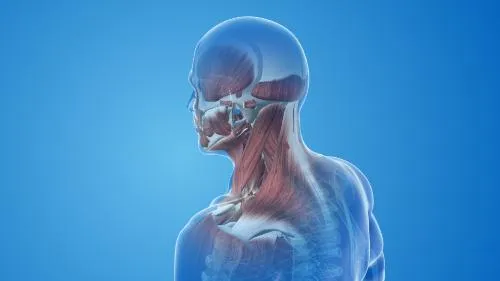
How to Overcome Sternocleidomastoid Syndrome Using Chiropractic Care
Sternocleidomastoid (SCM) syndrome refers to a range of symptoms that result from dysfunction or irritation of the SCM muscles in the neck. As one of the most prominent muscles spanning the length of the neck, the SCMs play a crucial role in head and neck mobility. However, when these muscles become strained, tense, or inflamed, it can severely impact neck range of motion and lead to debilitating pain and discomfort. Chiropractic care has emerged as an effective conservative treatment approach for addressing SCM dysfunction through hands-on spinal adjustments and muscle release techniques. By targeting the root cause of the irritation, chiropractic helps provide lasting relief for those suffering from SCM syndrome.
An Overview of Sternocleidomastoid Syndrome
The SCM muscles are two thick, rope-like muscles running vertically along both sides of the neck. They originate at the sternum (breastbone) and clavicle (collarbone), and insert behind the ear at the mastoid process of the temporal bone. Acting to tilt and rotate the head, these muscles work together with several other neck muscles to allow for mobility and stability of the head and neck.
SCM syndrome occurs when one or both SCM muscles become irritated, strained, or dysfunctional. This can happen due to muscle overuse, poor posture, whiplash injuries, blunt trauma to the neck, or chronic trigger points within the muscle tissue. When the SCMs are impaired, it leads to pain, muscle spasms, stiffness/decreased mobility in the neck, and referred pain into the head or shoulders.
Common symptoms of sternocleidomastoid syndrome include:
Neck Pain: Individuals with SCM syndrome often experience pain on one side of the neck, especially near the attachment points of the muscle.
Headaches: Tension in the sternocleidomastoid muscle can trigger headaches, particularly those radiating from the base of the skull.
Dizziness and Vertigo: The muscle’s involvement in head movement can cause sensations of dizziness and vertigo in some cases.
Ear and Facial Pain: Discomfort may radiate to the ear and face, mimicking symptoms of other conditions such as ear infections.
Visual Disturbances: Some individuals may experience visual disturbances, such as blurred vision or difficulty focusing.
Chiropractic Care for Sternocleidomastoid Syndrome
Chiropractic care focuses on the relationship between the spine and the nervous system, emphasizing the body’s ability to heal itself. Chiropractors use manual adjustments and other complementary therapies to restore proper alignment and function to the musculoskeletal system. In the case of sternocleidomastoid syndrome, chiropractic care can offer several benefits:
Spinal Adjustments: Chiropractors may perform spinal adjustments to correct misalignments in the cervical spine, helping to alleviate tension in the sternocleidomastoid muscle.
Soft Tissue Manipulation: Manual techniques, such as massage and myofascial release, can target the sternocleidomastoid muscle directly, reducing tension and promoting relaxation.
Posture Correction: Chiropractors assess and address posture issues that may contribute to SCM syndrome. They provide guidance on ergonomic improvements and exercises to maintain proper posture.
Stretching and Strengthening Exercises: Chiropractors often prescribe specific exercises to stretch and strengthen the neck muscles, including the sternocleidomastoid, to enhance flexibility and reduce strain.
Patient Education: Chiropractors educate patients about lifestyle modifications, such as ergonomics and stress management, to prevent the recurrence of SCM syndrome.
Conclusion
Sternocleidomastoid syndrome can significantly impact one’s quality of life, causing debilitating pain, spasms, and loss of mobility in the neck. While there are pain medication and muscle relaxers that may provide temporary relief, they do not address the underlying cause of the issue.
Chiropractic care takes a holistic, whole body approach to treating SCM syndrome and associated neck pain. Through manual spinal adjustments, soft tissue manipulation, therapeutic stretching and exercises, chiropractors aim to reduce irritation and inflammation in the SCM muscles and improve overall function. Lifestyle counseling may also be incorporated to help prevent future flare ups and recurrences.
The goal of chiropractic treatment is to not only find relief in the short term, but promote long term wellbeing for those suffering from SCM dysfunction. The customized nature of chiropractic allows for patient-centered care targeted to each individual’s needs.
If you have been experiencing symptoms like neck pain, spasms, headaches, and restricted range of motion, you may be suffering from some degree of SCM syndrome. Call our office today to schedule a thorough consultation and examination to determine if chiropractic can help resolve your neck issues once and for all.
This article is copyrighted by Blogging Chiropractors for its Doctor of Chiropractic members and may not be copied or duplicated in any manner including printed or electronic media, regardless of whether for a fee or gratis without the prior written permission of Blogging Chiropractors.
Office Hours
Mon 8:00-12:30, 2:30-7pm
Tues 8:00-12:30, 2:30-7pm
Wed 8:00-12:30, 2:30-7pm
Thurs 8:00-12:30, 2:30-7pm
Fri - Sun Closed
© 2025 Gonstead Chiropractic Center - All Rights Reserved

